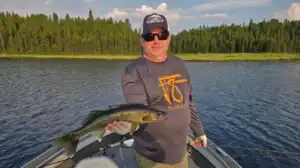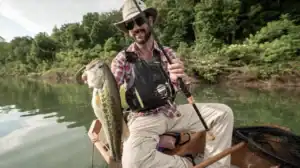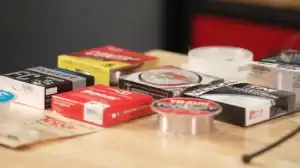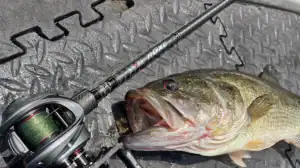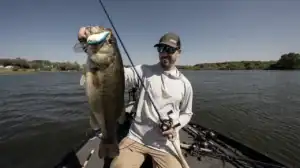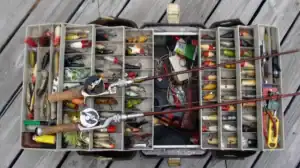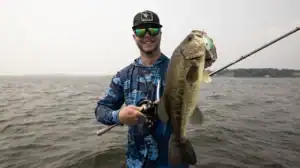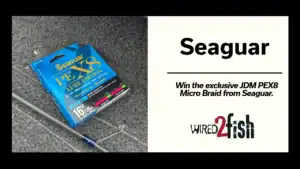If you’ve never fished for bass or enjoyed watching the abundant wildlife on north-central Florida’s famed Rodman Reservoir, you should. And if some day you want to, I’d suggest trying to save this remarkable piece of wetland habitat from folks who want to see it drained.
Powerful forces are once again trying to drain the lake, dredging up arguments that have been on-going for more than 50 years. That’s right – for more than two generations Rodman has been providing superior fishing for countless anglers who enjoy its famed angling.
The seemingly never-ending battle regarding draining the 9,000-acre Putnam County lake near Interlachen comes from a coalition of business, political and activist forces that have agreed to pull the plug on Rodman Reservoir.
Competing Sides
Drain proponents say pulling Rodman’s plug will allow more spring water to flow into the St. Johns River, thus offsetting saltwater intrusion from the Atlantic Ocean. But this is an illogical argument.
Far too many people who have never visited the Rodman Reservoir do not realize that the Ocklawaha River and its precious spring waters still flow into the St. Johns River. The river is dammed, but the water flows through the reservoir and out of the dam, which then again becomes several miles of spring-fed Ocklawaha River that enters the St. Johns southwest of the town of Welaka.
Throughout this lower Ocklawaha River length below Rodman Dam, there are countless springs and spring “seeps” that perk up through the ground and work their way to the St. Johns unimpeded.
Spring water going into Rodman isn’t slammed shut by Rodman Dam. It’s merely held in the reservoir for a time, creating fish and wildlife habitat that must be experienced to be believed. It flows through the lake, out of the dam, through the lower Ocklawaha River, and then into the St. Johns River.
Everything from wild northern migrating ducks, eagles, otters, snipe, countless alligators and other wildlife species far too numerous to name call Rodman Reservoir home — especially in winter. Take down the dam and 9,000 acres of wetland habitat disappears, displacing a staggering number of fish and wildlife species.
The Case to Keep the Reservoir

Rhetoric regarding Rodman Dam removal invariably is filled with half-truths and innuendos bordering on the absurd. I’ve been involved with this back-and-forth about Rodman since 1975, so I’m plenty familiar with all the efforts by both sides to get what they want. But this time around, some of the whoppers told about Rodman, and the good that will happen to the St. Johns River if the dam is removed, boggles my mind.
One of those half-truths is that by removing the dam millions of gallons of freshwater will flow into the St. Johns. That is true, sort of, at least initially until the lake drains and the Ocklawaha recedes back into its banks.
Then the volume of spring water coming into the St. Johns will be more like what is coming into it now – because the dam does not stop spring water flow, it merely slows and holds it in the reservoir for a time, before flowing through the lake and out via the Ocklawaha River and into the St. Johns River.
Another misguided statement about Rodman often heard is that the fishing will be better with the dam gone and the Ocklawaha restored. Bull feathers. Every angler and hunter I know would gladly be on the drain Rodman bandwagon if they believed that better fishing, hunting or wildlife habitat would result. But it won’t.
The truth is there is no question that Rodman is a world-class fishery, which has given up staggering numbers of 10- to 15-pound bass, and countless limit catches of 2-pound crappies and bream for nearly a half century.
A restored Ocklawaha will not replace the fishing available in Rodman. This is easily proven by anyone who has fished the tight confines of the still free-flowing upper Ocklawaha River above the reservoir, or the lower Ocklawaha River below the dam to the St. Johns River.
Some folks grouse about striped bass and American eels being rejuvenated with a restored Ocklawaha River, which perhaps could be used by these native species. But striped bass fishing in the St. Johns River always has been marginal at best, since the St. Johns is the southern natural limit of this anadromous species. Gray-beard anglers who remember great fishing for linesides in the St. Johns should also recall that the state fisheries department was very much involved in stocking pure striper fingerlings back then. This produced viable mature stripers for anglers. But that stocking effort has diminished in recent years, and so have the stripers.
Removing Rodman dam has little or nothing to do with the American eel, since they are catadromous, spawning in saltwater, living in freshwater. Commercial eel traps to feed a commercial market were the culprits for fewer eels in the St. Johns.
Who Uses the Rodman Reservoir?

Some people have tried to link Rodman fishing with nothing more than a placid playground for big money bass tournaments, and fishermen zipping across the impoundment in $80,000 bass boats.
That type of elitist thinking is ridiculous when connected to Rodman. Tournament bass boats do venture into Rodman, and some huge money events have been won there because the bassing is outstanding. But those who run the lake fast are fools, due to the timber and debris in the reservoir, which can make short work of an expensive boat. Many more small johnboats, runabouts, kayaks and pontoon boats ply Rodman than mega-buck fast bass boats. I’ve fished and hunted Rodman hundreds of times in over 50 years. Most of the time it’s been from small skiffs, johnboats and meager fishing craft.
Some folks complain that Rodman is a stagnant lake that is so full of weeds that it must be drained every few years.The fact that Rodman can be drained, and the lake rejuvenated every few years is a huge water management asset of the impoundment. Draining the lake and drying the bottom to remove weeds in Rodman is a rare event elsewhere in Florida.
On most other Florida lakes chemical weed spraying is done to keep water open, which is an environmental disaster not necessary on Rodman. Draining Rodman every few years also rejuvenates it, which produces superb fishing once it’s refilled to normal pool level.
Save the Reservoir

In 1995 a huge assembly of sportsmen formed Save Rodman Reservoir, a group whose mission is to preserve the lake so future generations of outdoorsmen can enjoy the lake. Steve Miller is the current president of Save Rodman, and here’s his take on the lake, which he has delivered in a letter to Florida Governor Ron DeSantis:
“The Rodman Complex should be the poster child for how the reservoir approach works to effectively offset the detrimental nutrient loads with its proven record of doing so.
“The St. Johns River Water Management District has estimated 30 million gallons of water a day could be effectively taken from Rodman for municipal use, should the need arise in the future due to excessive withdrawals from the Floridan Aquifer.
“Saving Rodman Reservoir above the noise and contrived ‘facts’ the detractors profess, would send a strong message of leadership to folks that utilize Rodman for recreation, sustenance and quite literally their livelihood.
“We believe retaining the Dam and Lake Ocklawaha far outweigh any perceived benefit removal might provide.”
Top bass tournament angler Bernie Schultz lives in North Florida not far from Rodman, and he knows the lake well and loves it. Here’s what Schultz says about Rodman:
“Draining Rodman Reservoir would displace an immeasurable amount of wildlife. And it would eliminate one of the best fisheries in Florida. My sons and I have spent many days on Rodman and the Ocklawaha. To deny future generations such a precious resource would be unconscionable.”
The opinions expressed in this article are those of the author and don’t necessarily reflect the views of Wired2fish. Wired2fish welcomes diverse perspectives from across the fishing community.


